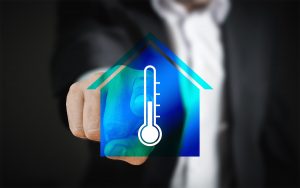
Knowledge Base / News
Cyber security is on the forefront of tech news, and for good reason. Threats of intrusion from potential state-sponsored hackers, the introduction of regulations to help protect data, and increasing figures on the amount of SMBs not prepared for a data loss can become overwhelming.
According to CSO Magazine, cyber crime damage costs will potentially hit $6 trillion by 2021. That is a staggering figure to consider. High risks of data loss and intrusion are driving organizations to put policies and procedures into place to help protect themselves.
The impact of data loss, whether due to a cyber security concern, human error, or environment factor can be catastrophic to an organization that relies on it’s data and IT services to operate. 7 out of 10 SMBs that undergo a major data loss, regardless of the cause, will close within just 12 months.
 Network and data security is a must for every organization. Firewalls are commonplace, whether they’re managed and maintained by an organization’s in-house IT team, or by an outside managed services provider. The main goal of firewall installations is to provide cyber security, and help the company’s data from being breached, stolen, or hacked.
Network and data security is a must for every organization. Firewalls are commonplace, whether they’re managed and maintained by an organization’s in-house IT team, or by an outside managed services provider. The main goal of firewall installations is to provide cyber security, and help the company’s data from being breached, stolen, or hacked.
Firewalls can also help protect against malicious links or downloads that can lead to ransomware situations, which cause data to be locked or encrypted and, in many instances, lost if a ransom is not paid.
Setting up proper protocols and policies like firewalls can absolutely help protect against data loss due to hacking or malicious intent… but what about data loss as a result of crashed servers due to high heat? Or, how about computer loss due to a leaking pipe that floods an office?
All too often, organizations think about cyber security and data loss, and forget about the accidental and non-malicious reasons they might permanently lose data. It’s important that any cyber security plan that’s developed to prevent data loss also factors in environmental causes that can cause data loss just as easily.
Causes of data loss are often unexpected; such is the case with many environment-related factors that can lead to organizations being shut down, if not going out of business outright.
The major environment contributors to data loss and business outages include:
 Firewalls, anti-virus software, and employee training on cyber security protocols won’t prevent data loss when any of the above three incidents occur. If nearly one third of data loss causes aren’t caused by cyber security breaches, it’s critical that every organization have environment monitoring in place to protect their data.
Firewalls, anti-virus software, and employee training on cyber security protocols won’t prevent data loss when any of the above three incidents occur. If nearly one third of data loss causes aren’t caused by cyber security breaches, it’s critical that every organization have environment monitoring in place to protect their data.
Preparing your organization against data loss is vital in this Internet-based economy. Even if your organization does not offer services online, your network still holds customer information, credit card data, stock figures, and so much more. If that information and data is lost permanently, your business is at high risk of permanent closure. No amount of business insurance or written policies will prevent that from occurring.
When your organization considers cyber security and reviews current plans and preventative measures, environment monitoring must be included. Reliance on just a firewall and software to fully protect against data loss leaves a giant gap in your business continuity plan. Review your office and facility to identify key areas that could be impacted by factors such as temperature, humidity, water intrusion, and power loss to help you install proactive environment monitoring.
40% of businesses never reopen after a disaster and you need to take every step to ensure that your organization doesn’t add to that statistic. Review your cyber security and business continuity plans continually, ensure that environment factors won’t cause massive data loss, and you will provide your entire organization with peace of mind in knowing your data and facilities are protected in as many ways as possible.

You may find Windows Command Prompt at the following path:
To run Windows Command Prompt as an administrator:
| Current S models | Current E models |
|---|---|
| Room Alert 32S | Room Alert 32E |
| Room Alert 12S | Room Alert 12E |
| Room Alert 3S | Room Alert 4E |
| Room Alert 3E | |
| S models | E & W models |
|---|---|
| Room Alert 32S | Room Alert 32E |
| Room Alert 12S | Room Alert 12E |
| Room Alert 3S | Room Alert 4E |
| Room Alert 3E | |
| Room Alert 3W |
| Model |
|---|
| Room Alert MAX |
| Room Alert 32S |
| Room Alert 12S |
| Room Alert 3S |
| Room Alert 32E/W |
| Room Alert 12E |
| Room Alert 4E |
| Room Alert 3E |
| Room Alert 3 Wi-Fi |